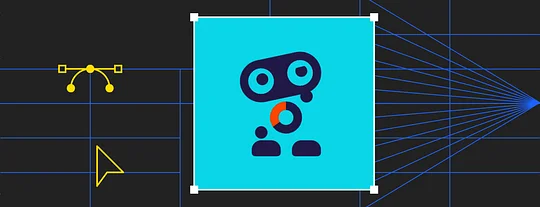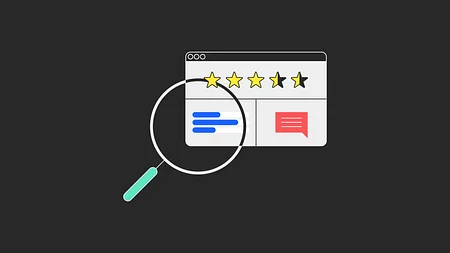Design drill down #6 | Making the leap from AI to humanity

In this design drill down, we’re exploring the different routes companies have taken to personify their artificial intelligence capabilities in an effort to build trust with customers and help them win with market demands.
Showing some character
Snoop and its adorable Robot Hood are fintech favourites of ours. In their own words: “It’s a little robot, built with a big heart”.
Snoop’s proposition monitors your spending activity and makes recommendations on where savings can be made across discretionary spending and regular payments such as energy bills. It’s powered by an AI, which to date has analysed over 200 million transactions.
To build trust with prospective customers, the brand is centred around a little robot character that embodies its capabilities and appears throughout the product experience. The design of the robot reflects the overall visual language - unfussy and approachable, with basic shapes used to build its appearance.
The design teams have done a great job of bringing the robot to life. Gestures and interactions are animated and communicate its personality really well. You get a real sense that the robot is there to help you and improve your financial wellbeing.
The character is supported by messaging such as: “Snoop's always learning new tricks to help you”, which does a great job in communicating the principles that the robot embodies.
Snoop has created a brand that reframes the power of AI to reduce consumers' security and privacy concerns while building confidence in the service.
Taking a more abstract approach
Named after IBM’s first CEO, Watson is described as an “AI for smarter business”. It has a living brand that represents a “thinking system” and an identity centred around an orb device that personifies that system and its DNA.
IBM took a different tack to Snoop and their character-led approach. Their in-house team wanted to communicate the positive potential of AI across different industries and create a sense of wonder at Watson’s capabilities.
The challenge was giving a powerful and abstract tool the qualities of trust and transparency. The result is a brand that reflects qualities of innovation and technological advancement without being too techie. It isn’t too bright or in-your-face, which makes sense considering this is a brand aimed at enterprise customers and not consumers.
The Watson logo feels alive with three-dimensional qualities due to its structured composition and use of gradients. It’s as though it would float above your palm if you held out your hand.
Whereas Snoop has a more focused audience to connect with, IBM Watson is seen far and wide across many teams, geographies and industries. The brand needs to be flexible and applicable to a wide range of use cases. The design team has done a great job in visually representing AI with a strong level of coherence.
Voice assistants humanising tech
To shift consumer perception away from AI going rogue (looking at you Skynet), there’s a continued drive to ‘humanise tech’ and make it more commonplace in our everyday lives.
One route towards this is the growth of voice assistants, led by Siri, Alexa and Google Assistant. Putting aside the question of how ‘smart’ these assistants are, designing a voice-based user interface has interesting considerations.
The teams behind these assistants include writers and psychologists to create human-like personalities that toe the line between playful and professional. In most cases they have assigned names and an implied gender - Google Assistant is the main exception.
As people, we often treat inanimate objects as living things so how we speak to voice assistants is driven by the qualities that we recognise in them. Alexa can be seen, or heard, as smart and humble whereas Google Assistant could be interpreted as a helpful librarian-type character.
Designers are challenged to create experiences that build unique personalities that can respond to a growing range of questions in a human-like way. Machine learning and natural language processing contribute to this and play a big role in consumer adoption.
As financial services continue to offer personalised products and services, it will be interesting to see how designers continue to create experiences that influence our relationships with technology. Especially as it becomes smarter and more capable of meeting our needs.



